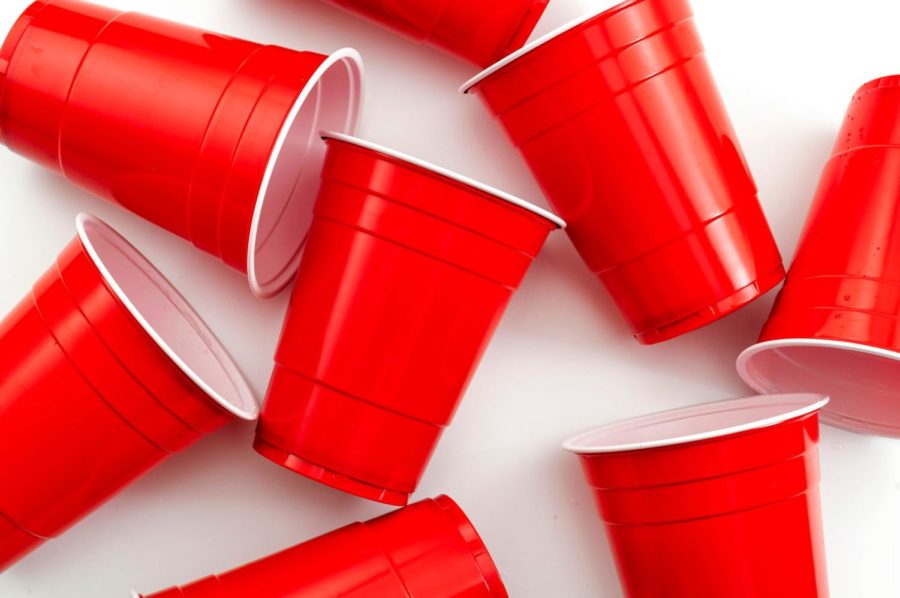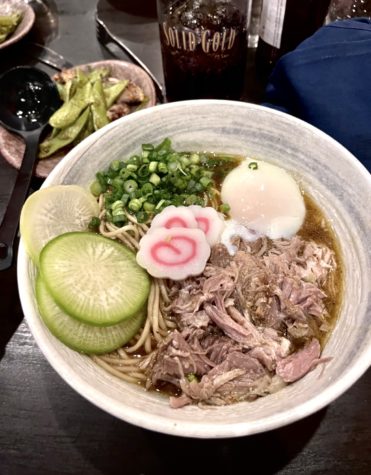Allow Me to Change Your Mind: Vol. 1: The Red Solo Cup
College party and beer pong concept with red drinking plastic cups on white background
October 20, 2021
Numerous events surround the tradition of college homecoming events which started back in the 19th century alumni return to college campus and mingle with current students. These events can include dances, courts, sometimes picnics and an entire week of dressing up to get into the spirit.
Two events take priority when the term “Homecoming” is mentioned – the football game and the tailgate that goes along with the game. Football is not what will be discussed here today (might save that for a possible future date) but the tailgate party associated with the football game has an icon under its belt that has become synonymous with partying. And that, my friends, is the red Solo cup.
Before I offer my opinion on the red Solo cup, let’s take a dive into its history and how it made its way to college campuses. The tradition started back in the early 20th century as disposable cups were thought to be the carriers of disease as water dippers and communal cups were shared with other people. However, once the public realized that wasn’t the case, they started using disposable cups from early manufacturers such as the Dixie Cup Corporation.
One of Dixie’s employees was Leo Hulsman who, in 1936, created the Paper Container Manufacturing Company in Chicago. Before plastic was introduced, the paper cups were commonly used and were also responsible for the cone cups you still see from time to time at your average office water cooler. After various health scares in the early 20th century, the company had to rename itself after the Solo cups rose in popularity.
This, in turn, gave way to more innovations that slowly transformed into the cup we know today. Examples include disposable coffee cups and the wax lined cups you see at fast-food joints. But the modern party cup wasn’t invented until the 1970s by the son of Leo Hulsman, which quickly took off in popularity for its sturdy design, resilient materials, opacity, and large capacity.
Since then, it has become a party icon, with early versions using ridges to allegedly measure liquid and proving effective in mixing cocktails. I say “allegedly” because newer information has come to light that the reason for the ridges is to make it easier to drink and to keep a steady grip on the cup. The alcohol parts are just a coincidence. It didn’t stop other companies from jumping on the bandwagon, enticing college kids to use the cup to monitor their consumption, The cups were used for games like Beer Pong while country star Toby Keith wrote a song about them in 2011.
So let me try to Change Your Mind about this matter.
The stereotype of the red cup being associated with alcohol is not a very good one. Speaking from someone who has vowed never to drink an alcoholic substance, it boggles my mind why so many people think the red cup is used only for alcohol.
Then I thought about why it came to be like this, especially on college campuses and even more so in fraternity life. College parties tend to run on a budget, which is why you don’t see champagne glasses at many of those events. The red cups are easy to come by and cheap as well (seriously, you purchase get a pack of 30 for only $3.58 on Amazon.). And, the final reason I ask this question is what do you do if you are over 21 in this scenario? You drink until you feel like you can’t take it anymore. Another factor is Beer Pong, a popular game played at these kinds of parties in which the regulation size for the cup is the same size as a red Solo cup.
However, it can be confusing to try to determine the substance the holder of the red cup is drinking since, to the untrained eye, it is hard to tell whether the drink is alcoholic or non-alcoholic. Sometimes, water is mistaken for gin and tonic and possibly vodka or tequila for its clear substance and any type of fruit juice can be mistaken for either regular beer or a cocktail.
These cups come in many other colors so is red the one the stereotype latches on to? Once again, this all goes down to the color’s popularity as SOLO executives say even though there is a blue variant, the red ones far outsell the blue ones.
Finally, the most confusing thing about this is the fear over having red cups in possession, so people should not automatically assume it’s used only for alcohol, especially if that red cup is in a college dorm. Even though red cups themselves aren’t banned, they can still be a negative connotation of drinking at parties.
There are some factors that confuse me, especially about avoiding the red cup, but I still get why this stereotype came to be and why it enjoys its current status. Next time you see a red Solo cup at a college party, take some time to think about it. Is it really being used to house alcohol or is the holder drinking just plain water?







